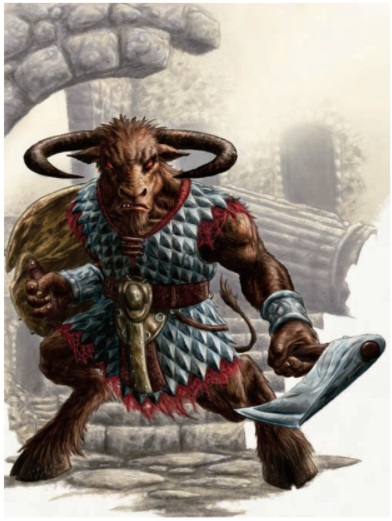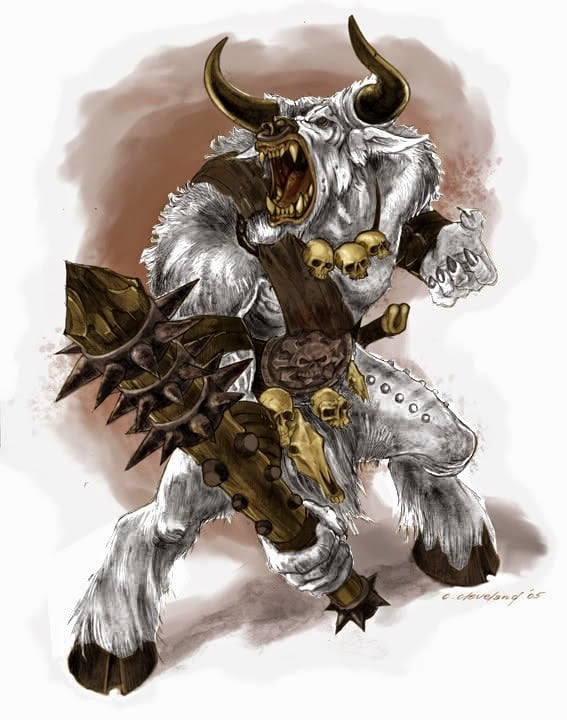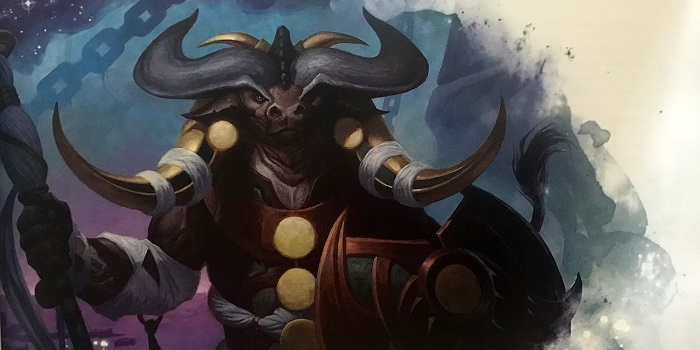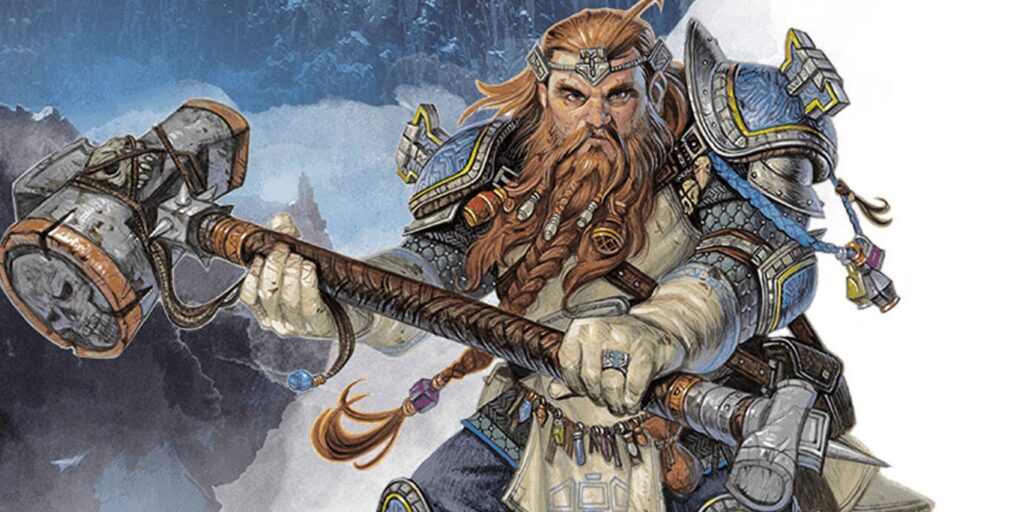D&D Race Guide: How to Play a Minotaur
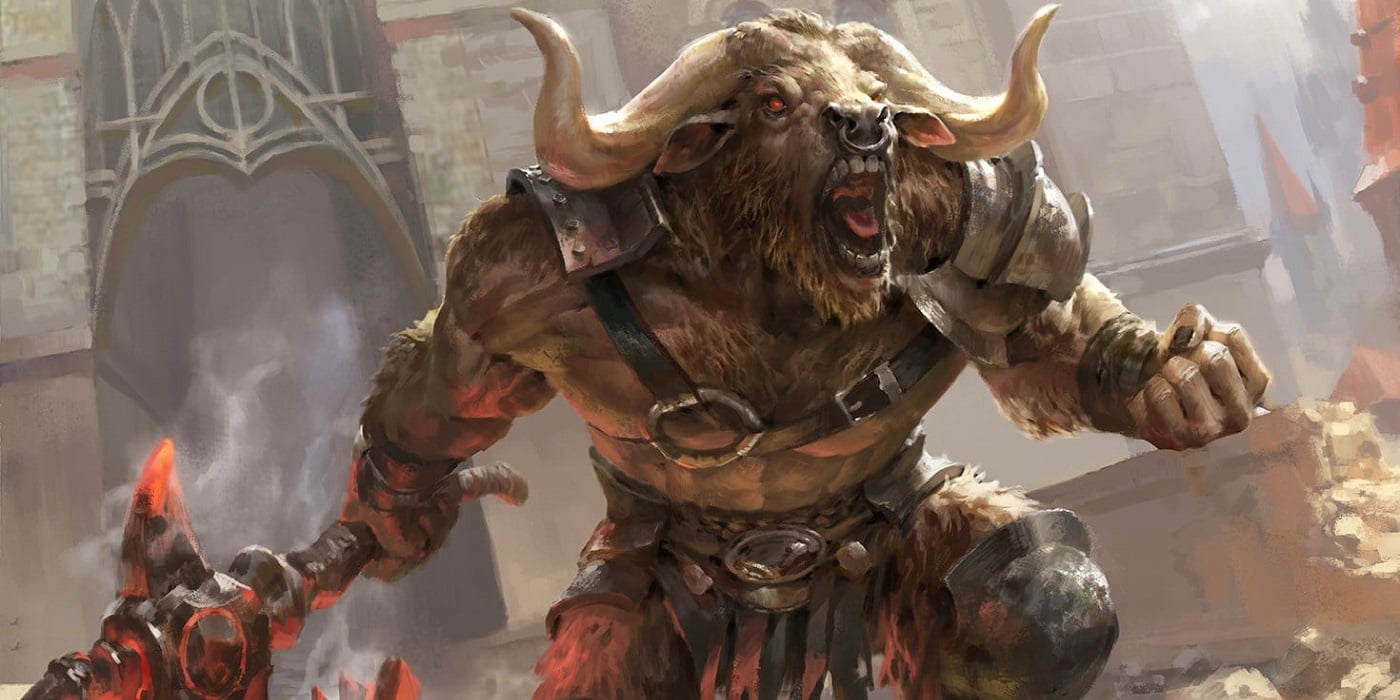
Just like you didn’t want to encounter the Minotaur in the labyrinth, enemies don’t want to encounter Minotaur player characters in battle.
Coming straight from popular mythology, Minotaurs are half bull, half human monster. In Greek mythology the Minotaur was born to Queen Pasiphae of Krete, and was sent to live in a winding labyrinth. After eating a bunch of the local youth who were sent into the labyrinth, the monster was eventually slain by Theseus. In D&D, they’re a little different and even playable as characters.
Minotaurs are barrel-chested humanoids with heads resembling those of bulls. Their horns range in size from about 1 foot long to great, curling weapons easily three times that length. They often ornament their horns with metal rings or sheathe them in metal to protect them from damage.
Minotaur Traits
Minotaurs show up as player character options for D&D 5E in a few places. First being 2018’s Guildmaster’s Guide to Ravnica. Here their Strength score is increased by two and their Constitution by one with a pretty standard speed of 30 ft and a “medium” size at a little over six feet tall.
Despite their monstrous mythological origins, Minotaurs aren’t considered to usually have an evil alignment – a choice I like. Instead, the book only specifies that those who join the Boros Legion are usually lawful, while those in the Cult of Rakdos or the Gruul Clans tend to be chaotic.
Minotaurs of course have horns, which are a unique melee weapon and good for 1d6 + strength damage, as well as a ‘hammering horns’ attack which lets you take a bonus action after a successful horn-hit to show your target. And then the ‘goring rush’ lets your character take a horn attack after a dash action and move of last least 20 feet. Finally, Minotaurs are physically imposing, and as such have “imposing presence,” giving them a proficiency in intimidation or persuasion.
Variants
The other Minotaur appearance is in 2020’s Mythic Odysseys of Theros. But while there are very, very minor changes to the class in Theros, the playable race is by and large exactly the same.
And while it wasn’t officially added to 5E, Unearthed Arcana 4: Waterborne Adventures has a few interesting additions and changes to Minotaurs. For example, “labyrinthine recall” lets the character recall any path they’ve traveled as a nod to the Minotaur’s home in mythology. They also have proficiency with navigator’s tools and water vehicles.
Best Classes
Mixed with Goring Rush, Hammering Horns, and Imposing Presence, a Minotaur would make a downright terrifying Barbarian. Their increased strength and constitution are a Barbarian’s dream, and their moves are designed to close the space between themselves and enemies in battle, and then ruin their whole day by giving them the horns. Add rage to any of that, and NPCs will be running for the hills.
Tip & Tricks
Minotaurs are physical characters. You could play one as a magic caster or a standard ‘stay’s in the back’ sort of class, but why would you? This is a character that wants to be right in the heart of the action, and if you’re choosing to play a Minotaur you’ll have the most fun helping them get right in there. And when fights aren’t actively happening, don’t forget to be imposing. Shake somebody down for information, intimidate a guy at the bar into leaving your friends alone, or just get a part-time job as a fantasy bouncer.
Have you ever played a Minotaur? Have you had one at your adventuring party? How well do you know the original myth? Let us know in the comments!
Happy adventuring!

